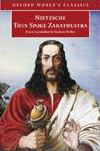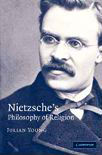Book Review
-
Nietzsche’s Philosophical Context: An Intellectual Biography By Thomas H. Brobjer
Reviewed by Daniel Blue
You may download the entire book review as Adobe PDF format clicking PDF icon on the left. If you need some clarifications about copyright or usage rights, please contact us at nceditors@ietzschecircle.com.
Page 1 | Page 2
Brobjer does not address this issue head-on, but he does propose less ambitious yet valid reasons for paying heed to Nietzsche’s reading. First, he stresses that Nietzsche repeatedly read and was in dialogue with certain authors, such as Schopenhauer, Rée, and Dühring. To read only Nietzsche’s side in the conversation, he argues, would be as shortsighted as reading only one party in an exchange of letters. To this one might reply that the “dialogues” Nietzsche had with authors were generally one-sided. He read and responded to these contemporaries, whereas they usually did not read or respond to him. Nonetheless, Brobjer does argue persuasively that Nietzsche’s positions were often formulated in response to specific questions that framed the various issues for him. Without understanding those to whom he was replying and the ways they determined the nature of the debates in his own mind, we cannot fully understand Nietzsche’s responses. Finally, Brobjer observes that Nietzsche’s first encountered such terms as “ressentiment,” “nihilism” and “décadence” in the books of others. He then used them in turn in his own annotations. (The first time he wrote the word “ressentiment” was, so far as we know, in the margins of a book by Dühring.) Clearly anyone hoping to understand the meaning of these concepts would be wise to investigate their origins and how Nietzsche used them in situ.
Having ended his book with these arguments and pleas, Brobjer follows with over seventy pages of notes, as well as an appendix of three tables and an index. Given the density of the text, many researchers will head directly for that index, looking up particular influences and thereby forgoing the admittedly heavy plodding of reading this book from cover to cover. Those who take such shortcuts will miss certain key insights of this book -- not just its citation of unexpected materials, but the general impression gleaned from immersion in its details. For a start, as Brobjer himself notes, Nietzsche appears to have given a misleading account of the authors who influenced him. While he was unquestionably versed in the work of Schopenhauer, his reading of books by Kant (as opposed to discussions in secondary sources) appears to be meager. As for Spinoza, Brobjer flatly states that he did not read him at all, his knowledge of this author being limited to secondary literature. Despite Nietzsche’s praise for illustrious predecessors, Brobjer suggests, his preferred reading and the source of most of his inspirations came from secondary sources (in which, as Brobjer observes, he had “implicit trust”) and from the admittedly inadequate but remarkably fecund speculations of his contemporaries.
Such a view may stimulate scholars to offer a variety of objections. Some of these will focus on individual claims, such as Brobjer’s position that Nietzsche never actually read Spinoza. Others will dispute how literally Nietzsche meant readers to accept the claims about reading that he made in Ecce Homo and elsewhere. While these objections are important and should be argued, they do not address the central thrust of Brobjer’s book, which is that the study of Nietzsche’s reading and the books in his library can provide valuable assistance in understanding his work. As it happens, we do not have to rely solely on Brobjer on this point. As mentioned earlier, a host of scholars on the Continent have been researching Nietzsche's reading for decades, and the benefits are beginning to become apparent.
To take just one example, Paolo D’Iorio, director of HyperNietzsche and a member of a team established to study Nietzsche’s library, puzzled over the notebook in which Nietzsche first recorded his commitment to the principle of Eternal Recurrence.5 The discovery itself is announced in a well-known entry which closes triumphantly, “6,000 feet above sea level and much higher above all things human! --.” 6 A mere two pages later, D’Iorio notes, appears a fragment, much of which was used in the opening lines of The Gay Science 109. This is the second aphorism in Book III and the one immediately following the discussion of Buddha’s shadow, so its textual location alone testifies to its importance. In an attempt to puzzle out peculiarities in both the wording and meaning of the corresponding notebook entry, D’Iorio went to the books Nietzsche was reading at the time, and he turned specifically to the passages annotated in Nietzsche’s library. In a work by Otto Caspari, he found discussion of an argument over whether the universe had a delimited beginning and end or was perduring. Such discussions, widespread at the time, tended to center on the first two laws of thermodynamics (particularly the second with its disquieting revelation of the implications of entropy) as well as Hartmann’s contention that an eruption of Will led to the “world process.” By consulting books by Caspari and Dühring, and in both volumes noting that Nietzsche had marked the passages at issue, D’Iorio was able to discover unexpected contemporary meaning and resonance in the opening of GS 109. Not only did Nietzsche use this aphorism tacitly to critique Dühring, Caspari, Hartmann, and William Thomson (each of whom took different positions in this debate), but he also touched glancingly on his own theory of interaction in nature. Above all, D’Iorio's research shows that at this early date (and at this early point in The Gay Science) Nietzsche was already pondering the logical and causal issues posed by Eternal Recurrence, namely whether space and time were infinitely extended or delimited and what events could either extinguish the universe or cause it to be reborn. It is safe to say that anyone familiar with D’Iorio’s discoveries will find it difficult to read GS 109 (or indeed any discussion of the role of Eternal Recurrence in The Gay Science) in quite the same way again. None of this could have been found without recourse to Nietzsche’s books and the confirmation of his annotations.
It appears then that Brobjer’s primary point is not merely buttressed but confirmed by the work of his associates. Yet he could also invoke even more distinguished support. When Giorgio Colli and Mazzino Montinari began their edition of Nietzsche’s works and Nachlass, many scholars in this country questioned both the feasibility and the usefulness of the enterprise. The two proceeded anyway, and few scholars today would fail to recognize the achievement and usefulness of the KGW. Brobjer and others are calling for Nietzsche scholars to extend that enterprise into another dimension, to the books and thereby the conceptual frames among which (and often against which) Nietzsche constructed his own views. This was an extension that Montinari encouraged, for he himself established the team of researchers that for decades has been performing the spadework in this endeavor.7 Until the work of this group (superintended by Giuliano Campioni) is complete and has been digested by scholars, interpretations created by armchair philosophers must be viewed as provisional possibilities that await adjudication by the facts. Brobjer’s book serves as an admonition and a voice of restraint. When dealing with a historical figure one must use the tools of history. To read Nietzsche without awareness of his contemporaneous background and philosophical context is to miss an invaluable dimension of his work and to run the risk of serious misinterpretation.
All content copyright © Daniel Blue - Nietzsche Circle. All Rights Reserved.
-
Thus Spoke ZarathustraBy Friedrich NietzscheA new translation by Graham Parkes
Oxford University Press, 2005
Reviewed by Horst HutterThis new translation of Nietzsche’s magnum opus is by far the best available in the English language. It should find its way to the desk of all students who do not have access to the original German.
-
Nietzsche’s Philosophy of ReligionBy Julian YoungCambridge University Press, 2006
Reviewed by Horst Hutter,
Concordia UniversityEvery student of Nietzsche in the Anglophone world should read this book. It is a most able treatment of a much-ignored and much-misunderstood topic close to the very heart of the writings of this seminal thinker.
Featured in the Agonist
-
Nietzsche, Music, and Silent Suffering An Introduction
By Yunus Tuncel, The New School University, New York City
...Focus on the impact of Nietzsche's knowledge of music on his philosophy and the development of his thought.
-
Music, Posthumanism and Nietzsche
By Stefan Lorenz Sorgner, Erlangen-Nuernberg
...the first order Empfindung associated to music is the dissolution of individuality which from a posthumanist[1] perspective brings about the realisation of the embeddedness of human beings in this world. Hence, music can bring about more than pain and pleasure in the recipients.
Support Us
Please consider donating! The NC is a not-for-profit organization. As an independent organization that receives no assistance from any institution, the NC relies on your magnanimity to sustain itself. Please help support the activities of the NC with a donation Donations of any kind, whether of money, services, equipment, or in-kind gifts, are all of great necessity and deeply appreciated.
Subscribe
To receive site updates, news, and announcement from NC via email. To do so, you simply need to provide your email address below.






